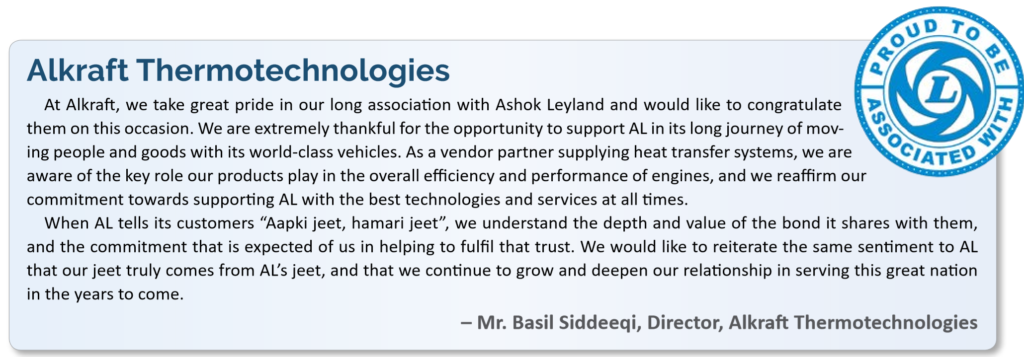“Axle norm revision is a double-edged sword and has its own benefits and challenges. In being allowed to carry more, the end-user may bring down the freight rates and, in that case, the transporter per se will not benefit from the entire amount.
Operational costs will go up as the increased loads will result in lower fuel efficiency and higher maintenance costs, and the same lead to transport challenges,” reveals Mr. Anuj Kathuria, President – Global Trucks, Ashok Leyland Ltd. (AL).
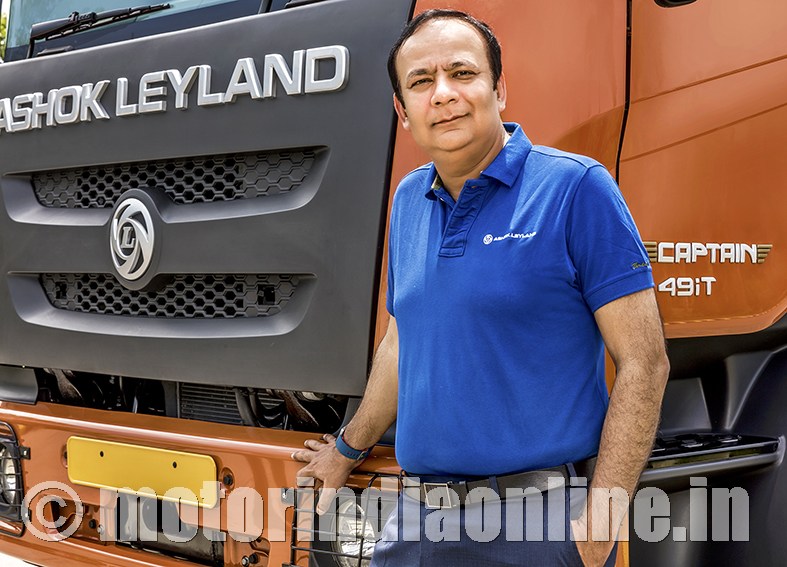
Excerpts:
The Global Trucks Group in the M&HCV segment plays a crucial role in AL’s operations, and at a time when the company is celebrating its 70th year of operations, can you indicate from your group’s perspective the highlights in its journey?
I would like to focus firstly on the last decade considering the nine years of my association with AL before reflecting on other developments. In 2010, the industry went through a big change in moving from BS-II to BS-III. AL had started making inroads in the north and east markets. There were pockets of success, but the regions were not adequately covered.
At this juncture, our Pantnagar plant started manufacturing operations and this gave us a solid anchoring to address the close by regions effectively. We started expanding the dealerships in the north and east regions. The Rajasthan market was always good for us, but the question being how to get a good presence in markets like the NCR, UP, Punjab, etc. Our market share in the north zone was an average 18 to 20% and the same backed by a few winner products. If you don’t have a comprehensive product range, the vehicle path remains limited and so also the repeat purchases.
Hence it was imperative to produce good sales month after month to increase the visibility and sustain the growth curve.
The UP market was not doing well, and we had to expand both our dealer network and as well actively engage with customers. Corporate senior managers often visited the region and met not only the customers but also other stakeholders like financiers to give a thrust. The UP market was scattered with more of retail customers and no big fleet owners; hence we had to address this by an initiative called LMG (local mechanic garage). We trained 300 plus mechanics and provided toolkits and support, apart from doing some branding for them.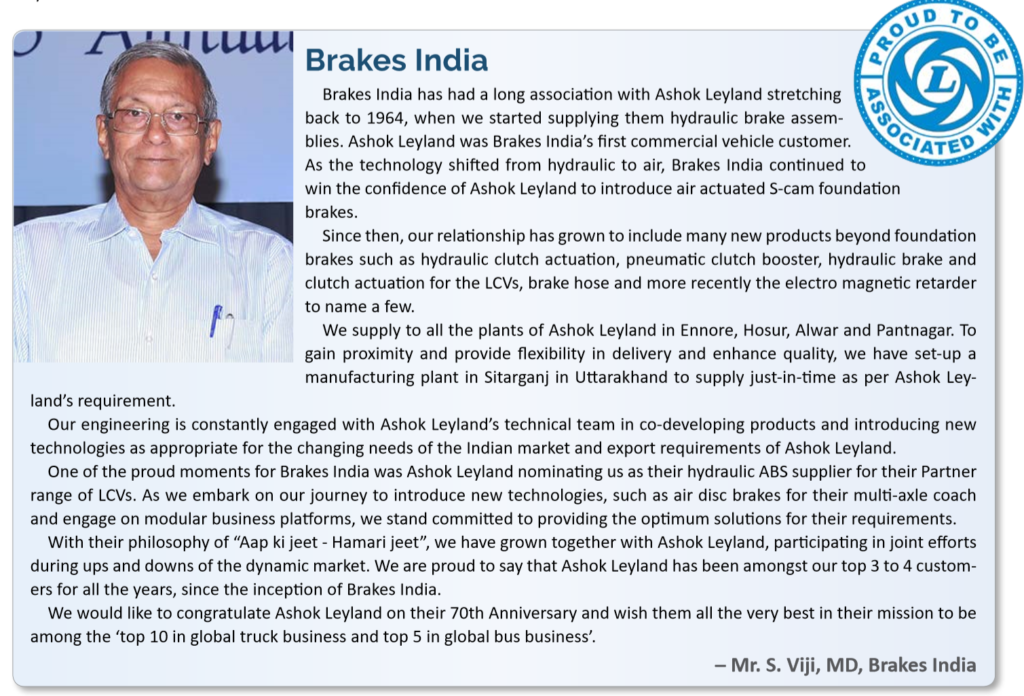
As many wanted to start their own venture we also helped them in the endeavour, and they were also allowed to attend to other makes of CVs. But with the basic training in AL vehicles, their skill levels were better with our vehicles; and they did a better job. They acted as ambassadors in facilitating our vehicles purchase through recommendations to fleet operators, STUs and small and first-time operators – it was an unconventional touchpoint for sales.
We also expanded our presence in Punjab and J&K through the existing dealers and new partners. From about 1,000 touch-points in 2010, we have close to 3,000 now, and many of them added in the north and east region. We have made good progress since 2010, and in east zone, the market share touching 30% sometimes but consistently clocking 25%-26%; and the north too averaging 25% although some States like Rajasthan are doing much better.
Can you apprise us the Global Trucks structure, operations and the markets addressed, the market share for rigids & tractors, and that in sub-segments and plans to expand footprint?
At Global Trucks, we manage the entire product portfolio and commercials for both domestic and outside markets. We have got our presence in India-like markets such as east & south SAARC countries, east & west Africa, and also in countries where the products need to meet higher pollution norms like Russia. However, we need a separate focus for international markets, and in this regard our team in Dubai takes care of day-to-day sales, network expansion, identifying right partners, etc.
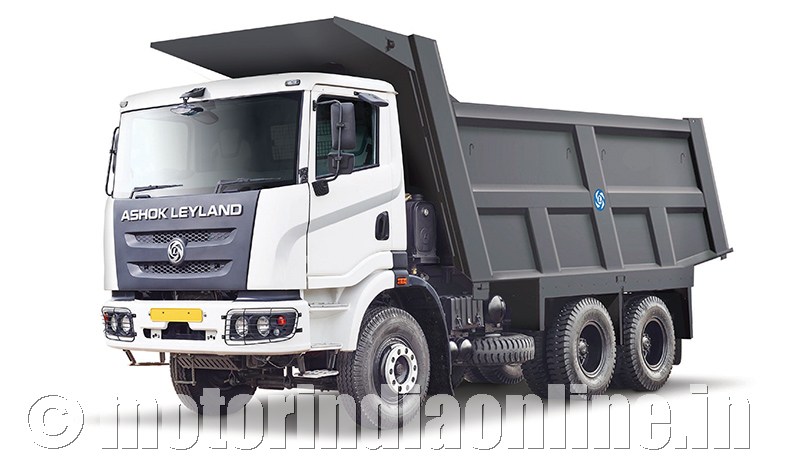
The market share of rigids to tractors keeps changing though the major chunk is invariably taken by multi-axle rigids.
We have the sub-segments with market share in TIV as ICVs 22%, multi-axle rigids 35%, tippers 25% and tractors 17-18%.
AL will have a similar pattern, and for us major market share is derived through multi-axles and tippers.
The ICVs market share in AL, which was less than 10% a decade back, is now around 24-25%, still below AL’s average in trucks around 32%, and there is more headroom for ICVs.
We expect tippers to do well in the next 2 years due to anticipated growth in infra road projects and the mining sector. The mainstay for AL is the ‘on-road multi-axle vehicles’ with 5-axle 37 ton GVW taking the top spot. The 16 ton and 25 ton multi-axle vehicles which used to rule the roost some decades back have given way to the 31 and 37 ton class vehicles. However 16 & 25 ton are still sought after for volume loads with lower density like white goods, e-commerce, scooter carriers, etc.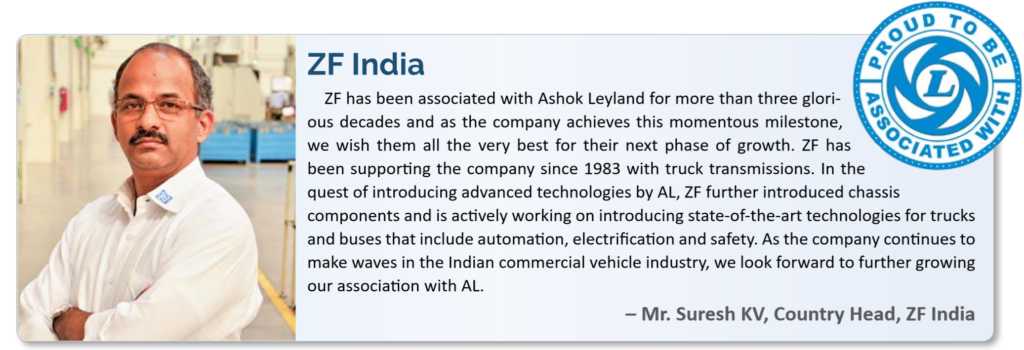
They are popular also for oil and chemical tankers, but we also see operators opting for 31 and 37 ton vehicles these days for chemical and special fuel transport.
Robust service network is critical in CV business to sustain and expand the customer base. Tell us about AL’s approach and initiatives in this direction.
Although we increased the number of touchpoints in various regions, our target has always been to have one touchpoint every 75 km. We did it in an innovative way by providing ‘workshop on wheels’, the first-of-its-kind initiative in the domain and have now 250 of them. The dealer owns and operates it, but the same are built by AL for them and comprehensive support provided in this regard to the dealer. Technology is changing fast, and it’s important that the mechanics need to be updated and trained.
The conventional way was to call them for a workshop for the training but the traction was not happening. So we started a new concept called the ‘knowledge on wheels’, a classroom-cum-workshop, like a training school on wheels with live engine, transmission, etc. With this we could go to any of the hubs where mechanics are there, call them over and impart the necessary training on major aggregates.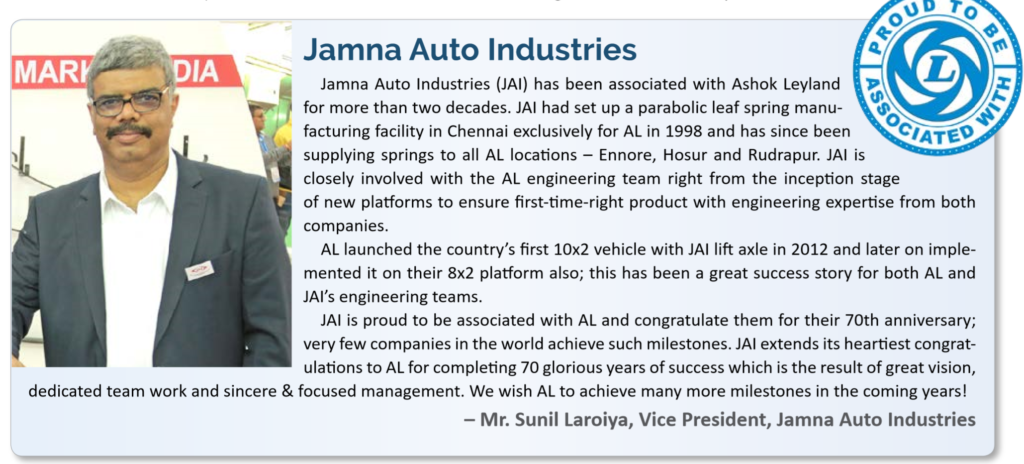
We are sensitive to the performance of our dealers and extend all help to improve their profitability. In this regard, we started giving well-defined AMC packages with our vehicles and the penetration of AMC has been the highest in the industry. This gives confidence to the customer about the assured service from the outlets in any part of the country; and dealers are also happy because they get higher revenue as the vehicles come back for service to their workshops.
More recently we have launched the digital platform initiatives like iAlert, e-Diagnostics, Service Mandi and Leykart to address the fast changing customer requirements, and they have been received very well.
Product innovation has been one of the thrust areas for AL. In this regard, highlight the details of the new model 41 ton 5-axle truck, iEGR and the recent introduction of Innoline.
There are several ways of getting into and beyond 37 ton; and after studying the requirements, we zeroed in on 41 ton GVW (as per old axle norm) in the 5-axle class which is a sweet spot.
Herein the lift axle actuation is through twin lifts and the same is not easy to configure, for it has its own challenges. We have already showcased the product and opine that it’s the right one for the industry and customers.
Several innovative concepts have gone into the engineering and most of them patented. When the 37 ton was introduced, transporters of cement switched from 31 to 37 ton and now they will migrate to 41 ton (old norm). Cement density being high, there is always the preference to migrate to higher GVW rigid chassis with the overload restrictions. While rigids are preferred in south India for cement transport, in places like Rajasthan tractor-trailer is the popular route.
Certain application legacies as well as customer and driver preferences lead to the tractor-trailer or rigid vehicle choice.
During the BS-III era, we were the only ones with inline fuel pump, popularly referred to as the SADA pump. While the market was speculating as to how AL will address the BS-IV shift, we brought in the iEGR, the first of its type in the world for BS-IV 180 Hp and above. Absence of exhaust treatment fluid and system, less of electronics, easy maintenance and lower overall costs have resulted in the popularity of iEGR amongst customers and today we have over 1.5 lakh vehicles in operation.
The recently launched Innoline has been one more variant, another world’s first – SADA pump (instead of the electronic fuel pump) for BS-IV through iEGR in select models. This helps in reducing the complexity and providing a simple Indian approach to meet the pollution norm.